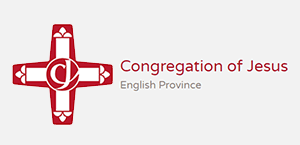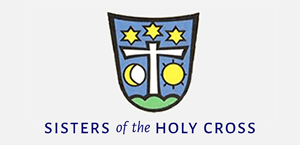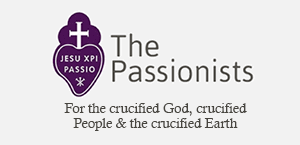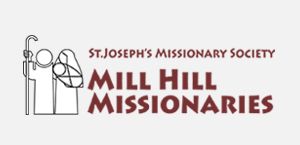Exhibition: The Edwardians - Age of Elegance
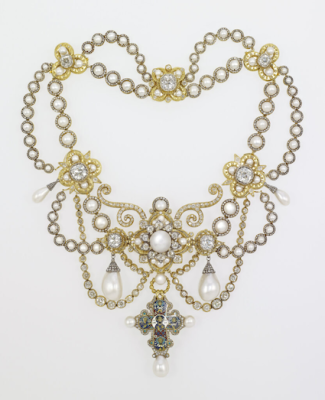
Dagmar Necklace with Neo Byzantine cross . Royal Collection Trust
The Edwardian age was an age of elegance, glamour and opulence, embracing new artistic movements .
The future Edward VII's marriage to the Danish Princess Alexandra heralded a more approachable monarchy who were leaders in style and fashion.
The King's Gallery in Buckingham Palace, presents over 300 stunning works collected by them and their heirs George V and Queen Mary.
A dynastic family portrait of Queen Victoria's Golden Jubilee ,1897, was painted by Danish artist Laurits Tuxen, introduced to Victoria by Alexandra.
Seated in the Green Drawing Room at Windsor Castle, in mourning,Victoria is surrounded by her extensive family across Europe. Edward stands beside her and his heirs, Albert Victor, who died, is on the right, and George is on the far left side of the composition.
The Prince and Princess of Wales developed their own artistic tastes. Marlborough House, their London residence, and Sandringham House in Norfolk were filled with gilded and painted furniture, porcelain, rich textiles and works of art interspersed with family mementos and photographs in densely cluttered interiors.
A fascinating screen created for Sandringham has 136 photographs of celebrities of the day who were part of the royal circle.
Alexandra collected pre-Raphaelite drawings by Edward Byrne Jones and Edward was drawn to the works of Lawrence Alma -Tadema, visiting his studio in Italy several times. Tadema assisted with the Coronation decorations in 1902 and was awarded the Order of Merit. The royal couple were advised artistically by him and Frederick Leighton whose paintings they also collected.
Alma-Tadema's luminous, luxuriant flowery Neo -Classicism blended with Dutch Romanticism is epitomised in God-Speed, c.1893, with a languid beauty strewing roses from a Mediterranean roof top. It was a wedding gift for the future George V and Queen Mary. The Dutch born artist frequented Sandringham and writes of spending 'golden hours' there.
Alexandra was a keen photographer using one of the first Kodak cameras. Many of her family snapshots are displayed as well as atmospheric scenes from her holidays and royal tours. The couple also supported the first professional female photographers.
Wonderful portraits include Philip de Laslo's stunning Princess Andrew of Greece and Denmark in 1907, mother of Prince Philip, Elizabeth II's consort. Born Princess Alice of Battenberg, she later became a Greek Orthodox nun.
The Vestibule displays a fine collection of beautifully bound books including Queen Mary's psalter, bound by Katherine Adams, a leading binder of the Arts and Crafts movement. Elegant gold tooling with fine pointelle distinguished her work, along with acorns and oak leaves as seen on the covers edging.
The crowns represent Mary's coronation crown of 1911 and the rose and pomegranate tooling are emblems of the Tudor Queen' mother, Katherine of Aragon.
The gold tooled Latin dedication on vellum reads: 'PSALTERIVM MARIAE QVONDAM ANGLIAE REGINAE ... MARIAE NVNC ... CONSORTI OBTVLERVNT MVSEI BRITANNICI GVBERNATORES A.D. MCMXII'(The Governors of the British Museum have offered the Psalter of Mary, formerly Queen of England, ... to Mary, now Queen Consort ..., AD 1912).
Other treasures in this section include Francis Bacon's philosophical depiction of a princely garden, an inspiration for calligrapher Alberto Sangorski with his beautiful, illuminated vignettes of gardens, probably modelled on Sandringham. The book was presented to Alexandra in 1904 by a diplomat.
There is also a rare signed copy of Oscar Wilde's poems dedicated to Edward, Prince of Wales. Sarah Bernhardt was another great figure from the arts who captivated Edward. Renowned as a superlative actor she was also a talented artist and sculptor. An extraordinarily powerful bronze self portrait as a Chimera was gifted to him in 1880 and kept in his Marlborough House study.
Displayed for the first time is Alexandra's copy of Sir Edward Elgar's 'Coronation Ode for King Edward VII', acquired and signed by her in 1902. Included is the piece known today as 'Land of Hope and Glory.'
Alexandra's splendid gold coronation dress is shown alongside Edwards' golden Coronation cloak embroidered with national emblems in coloured silks.
A French fashion house designed her dramatic gown which can be seen glittering in the stunning Coronation portrait. It was embroidered in Delhi.
The exquisite gold, diamond, and pearl Dagmar necklace worn at the coronation was a wedding gift to Alexandra from Frederick VII of Denmark in 1863. It incorporates a reliquary enamelled cross which is a replica of the one famed Queen Dagmar had placed in her grave which enclosed a fragment of the True Cross. The original cross, dating from 1000, is now in Denmark's National Museum in Copenhagen.
The fragment of the True Cross was similarly placed in Alexandra's cross, following a tradition for Danish princesses on their marriage.
The neo- Byzantine cross bears an image of Christ Pantachrator at the centre, with Mary and St. John either side and Saints Basil and John Chrysostonom above and below Christ. On the reverse is an image of the crucified Christ.
Alexandra often wore the cross separately on a string of pearls.
Apart from Faberge collectibles there are unique Russian artefacts inspired by folk art , probable gifts from the Russian royal family.
WWI transformed society and five war artists movingly portrayed scenes including photographer Olive Edis.
The exhibition culminates with Frank O.Salisbury 'The Passing of the Unknown Warrior, King George V as Chief Mourner.1920.'
A truly memorable exhibition.
For more information see: www.rct.uk/collection/exhibitions/the-edwardians-age-of-elegance/the-kings-gallery-buckingham-palace?












